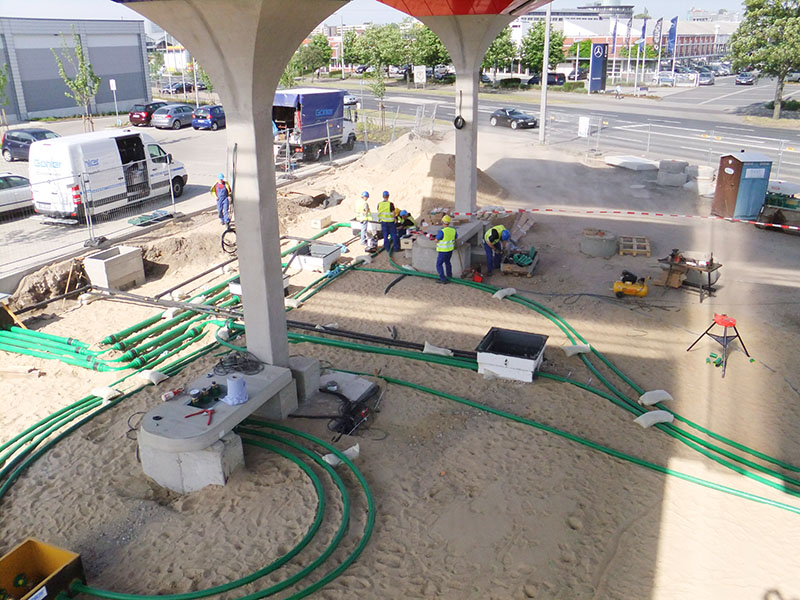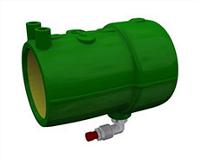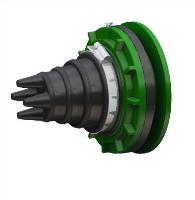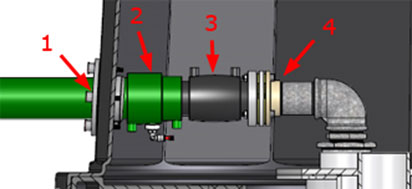4 Mistakes to Avoid when Designing a Fuel Piping System
17 September 2016
When designing a filling station there are many things to consider. Naturally a lot of attention goes into achieving a good traffic flow and attracting customers to the convenience store. But the design of the underground systems is vital to the station's future operation, and can help cut down installation time, improve the fueling system's performance and save on maintenance costs.
Some extra attention to the underground system can build a design engineer's credibility both with installers, retailers and colleagues in the industry. Here are a few things to avoid when it comes to filling station piping design.
1. Assuming Pipe Runs Need to be Straight
Back in the days, all piping used to be rigid steel piping and the drawings were made by hand using pen, paper and a ruler. Today's plastic fuel piping is at least semi-flexible and delivered either in coils or straight 5.8 m lengths, which each has its use. The coiled lengths have the advantage of not requiring any joints at all along the pipe run and are perfect for product lines and vapor recovery, both in suction and pressure systems. They can be laid in soft curves and arcs that are optimal for fuel flow (less turbulence) and requires less installation work on site. There is no longer a need to "think straight".
Just look at this beautiful German installation where coiled pipe is used to its best advantage:


2. Neglecting to Specify which EXACT Components to Use (indicating pipe run with a line only)
This is so very common and unfortunately it can potentially make or break the piping installation. End fittings and proper entry seals for containment sumps play a vital role in ensuring a sturdy, maintenance free piping system.
One may assume there is some sort of standard way to go about things, but in fact it varies country by country, region by region, from one installer to the other. Everyone have different reasons to why they choose to do things the way they do. These decisions can be based on personal preferences, what products are the cheapest, easiest to install, easiest to order, what is on stock, or just plain habits and what someone is used to. Even if the retailer has a list of approved products, there may still be several options to choose from.
Without a proper specification or installation drawing, the end result may vary greatly, from excellent to less good.
 Without planning and specified piping design, installers need to find improvised solutions at the time of installation.
Without planning and specified piping design, installers need to find improvised solutions at the time of installation.
By providing a detailed installation drawing, improvised, undesired or cheaper sub-standard solutions can be avoided, and this brings us to the next issue.
3. Considering Initial Installation Cost over Lifetime Cost
Some products are less good than others, but are preferred in low cost markets and some products were just meant to be used in one specific context but is unsuitable somewhere else. The temptation to go for the piping and components with the lowest price can be very strong in all parts of the specification, planning, and installation process. While good cost control is admirable, sometimes these initial savings lead to larger costs down the line for repair and maintenance.


A rubber seal for termination of secondary containment offers a sub-standard security vs. an electrofusion termination fitting that remains reliable over time.
If just one excavation for repair or maintenance can be avoided, savings are enormous compared to the small cost of using high quality fittings for the piping system.
4. Neglecting the Effect of Product Choice on Installation Time (and Cost)
It is amazing how much time can be saved by selecting fittings and components that require less time for installation. This is especially true in double wall piping. Double-wall welding sockets, tees and elbows vary greatly in design between different makes of piping and also within the product range of each piping brand. Things to look for are for example:
- The number of individual components to assemble for a joint
- Number of welding operations required to complete the installation of a socket, tee or elbow
- If more than one fitting can be welded at the same time, in series (using the correct jumper cables)
- Number of holes it is necessary to drill in a containment sump for installation of a pipe entry seal

The integrated double-wall socket is one of the most popular KPS components. It is in one integrated piece so no assembly is necessary and it will weld two primary pipes and two secondary pipes in one single welding operation.


Two entry seals: One will require drilling of 1 larger hole and 6 smaller holes for the bolts, the other requires only 1 large hole.
Additional considerations are:
- The total number of fittings required along the full pipe run, including entry seals, termination of secondary containment and transition fittings (plastic-to-steel)
- The cost of the fittings
Example:

4 products, 7 holes to drill and 2 welding operations for sump entry and connection to tank lid: Entry seal, termination fitting, welding socket, transition fitting.

2 products, 1 hole to drill and 1 welding operation to achieve the exact same result.
In order to truly get a better understanding of the individual components of a piping system and how they can be used to the best benefit, ask the supplier of the system to send you some samples and/or drawings showing recommended practices. That way you can test the products out yourself and get a better feeling for quality and fit as well.